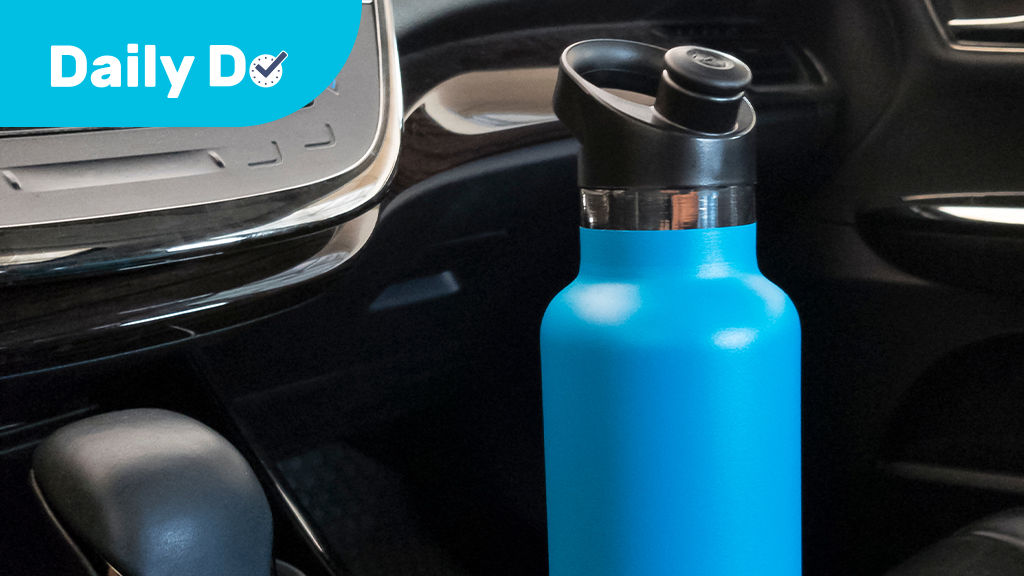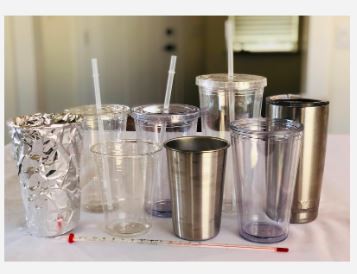Middle School | Daily Do
How Can Containers Keep Stuff Cool?

Crosscutting Concepts Disciplinary Core Ideas Is Lesson Plan NGSS Phenomena Physical Science Science and Engineering Practices Three-Dimensional Learning Middle School Grades 6-8
Sensemaking Checklist




Welcome to NSTA's Daily Do
Teachers and families across the country are facing a new reality of providing opportunities for students to do science through distance and home learning. The Daily Do is one of the ways NSTA is supporting teachers and families with this endeavor. Each weekday, NSTA will share a sensemaking task teachers and families can use to engage their students in authentic, relevant science learning. We encourage families to make time for family science learning (science is a social process!) and are dedicated to helping students and their families find balance between learning science and the day-to-day responsibilities they have to stay healthy and safe.
Interested in learning about other ways NSTA is supporting teachers and families? Visit the NSTA homepage.
What Is Sensemaking?
Sensemaking is actively trying to figure out how the world works (science) or how to design solutions to problems (engineering). Students do science and engineering through the science and engineering practices. Engaging in these practices necessitates that students be part of a learning community to be able to share ideas, evaluate competing ideas, give and receive critique, and reach consensus. Whether this community of learners is made up of classmates or family members, students and adults build and refine science and engineering knowledge together.

Introduction
In today's Daily Do, How can containers keep stuff cool?, students investigate which properties of thermal cups are most successful in keeping drinks cold. This task has been modified from its original design to be used by students, families, and teachers in distance learning. While students could complete this task independently, we encourage students to work virtually with peers or in the home with family members.
Before you begin the task, you may want to access the accompanying How can containers keep stuff cool? Google slide presentation.
What Phenomenon Am I Exploring Today?
Cups designed for keeping drinks cold have many different features. Which particular cup feature(s) are important for keeping a drink cold? Present students with a variety of cups designed to hold cold drinks. Have students discuss their initial ideas using the following questions (slide 1):
- Which cup do you think will keep the water cold the longest? Why?
- Which cup do you think will cause the water to warm up fastest? Why?
These questions will help identify students' prior knowledge about how thermal energy is transferred (heat). Depending on the cups being used, students might say liquid will stay colder in cups with insulation, thicker walls, and/or lids. Students may have ideas about insulating materials, like air or plastic, that "trap cold" or "keep out heat" and conducting materials, like metal, that "let cold out faster" or "transfer heat."
Planning and Carrying Out Our Investigation
Show slide 3. Ask students which cup features they think are most important for keeping a drink cold and how they might test their ideas. Students can share their ideas on a class Google doc or on an interactive posting site such as Padlet or Jamboard. Features students identify may vary based on the cups available, but will likely include these:
- absence or presence of a lid
- absence or presence of a straw
- number of walls
- thickness of walls
- cup material
Use the shared ideas to transition students to planning an investigation.
(Show slide 4) Tell students they will plan an investigation to determine which cup features are important for keeping a drink cold.
If thermometers are not available, ask students to find a partner to discuss the following questions:
- What could we add to the liquid that would indicate the temperature is changing without using a thermometer?
- How could we measure the rate of temperature change in the liquid without a thermometer?
Listen for students sharing ideas about adding ice to the liquid, using melting ice as an indicator of temperature change, and timing how long it takes the ice to melt to measure the rate of temperature change. Ask these students to share their ideas with the whole class.
(Show slide 5) Remind students
Show slide 6. Work as a group to determine independent variables such as amount of water, amount of ice, location of the cup, and how often to check the cup. Have students record the agreed-upon variables in their student handout.
Show slide 5 and allow students to work independently to develop the remainder of their investigation, identifying which variable of the cup they wish to test. Students may wish to run several tests to determine which part of their cup was most important in keeping a liquid cold.
Show slide 6 and give students time to conduct their investigations. Encourage them to set up their data tables prior to conducting their investigation. If students need support in building a data table, work collaboratively to develop the data table.
Note for home- and distance-learning: Have students identify how testing remotely may lead to issues with comparing test results among the group. Have students record the possible issues on their student handout. Students should identify that they won't be using the same cups, houses might have different temperatures, and not having thermometers.
What Does Our Data Tell Us?
After students have had time to carry out their investigations, allow them to share what they noticed in their data. If students are working asynchronously, consider having them share data using a shared Google Doc or other online platform. Have students answer questions 4 and 5 in their student handout, and show slide 8.
Students should identify patterns such as these:
- Double-walled cups work better than single-walled ones.
- Cups with lids work better than cups without lids.
Look for students to use evidence from the investigation and reasoning to support their claim. While students may develop different claims because of variations in the cups available to use in their home, the focus should be on students' use of evidence and reasoning to support their claim.
Connecting to Other Containers That Keep Stuff Cool
Have students think about related phenomena by using the following prompts found on slide 9:
- What other types of systems help objects maintain the same temperature without electricity?
- How do you think these systems work?
- Do they work the same way if the objects are hot or cold inside?
Students may identify hot or cold packs, clothing, blankets, lunch boxes, or coolers. They should try to identify how these systems work to keep objects hot or cold by the types of materials they use or how they trap heat.
NSTA Collection of Resources for Today's Daily Do
NSTA has created a How can containers keep stuff cool? collection of resources to support teachers and families using this task. If you're an NSTA member, you can add this collection to your library by clicking Add to My Library, located near the top of the page (at right in the blue box).
Check Out Previous Daily Dos From NSTA
The NSTA Daily Do is an open educational resource (OER) and can be used by educators and families providing students distance and home science learning. Access the entire collection of NSTA Daily Dos.
Acknowledgments
This Daily Do is inspired and uses materials from the How can containers keep stuff from warming up or cooling down? storyline created by OpenSciEd. OpenSciEd is an open-source resource that can be used by parents and teachers to implement student-driven learning.


